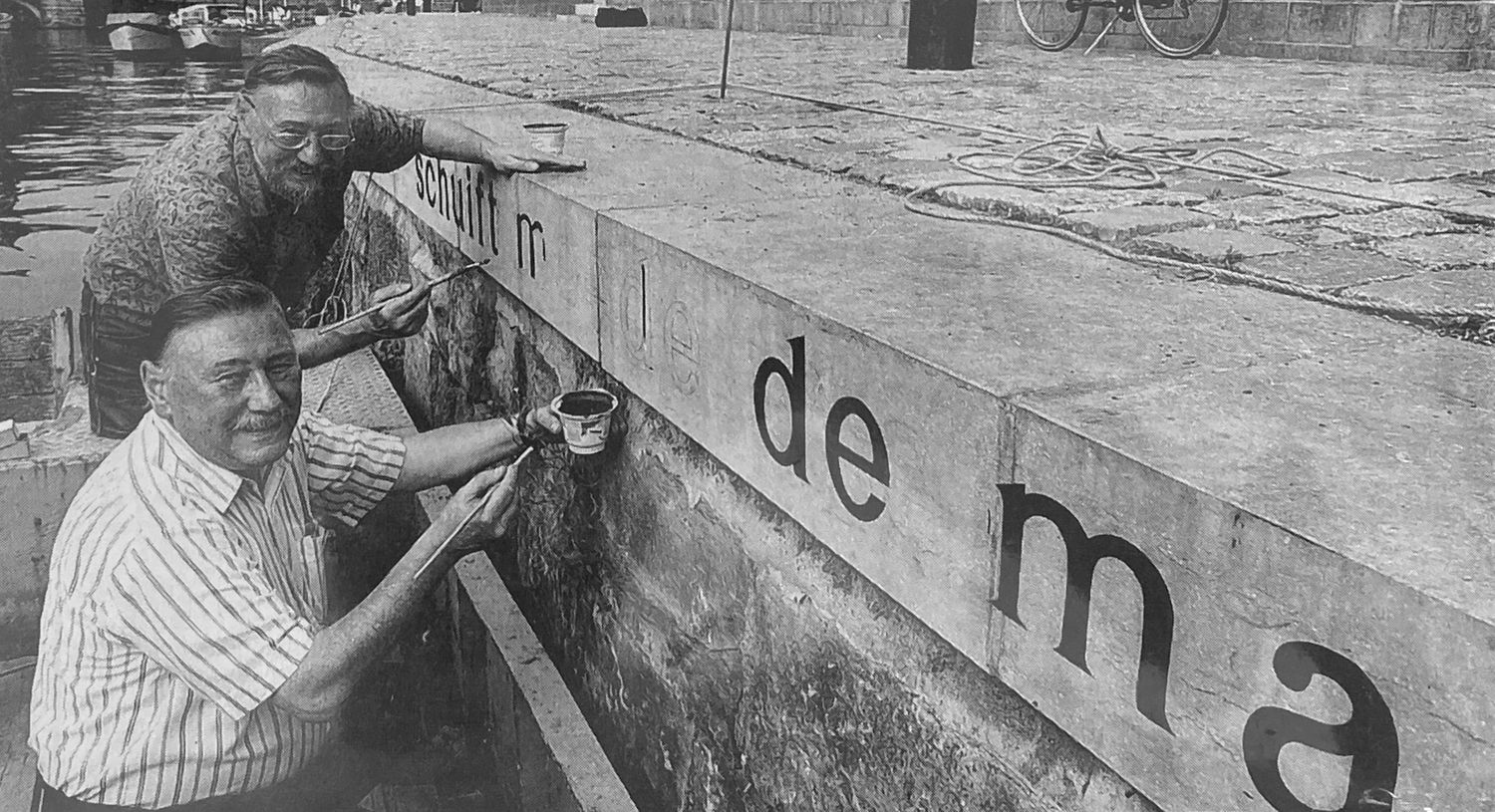Poetic Painting on the River Leie in Ghent
Maarten Leenknecht and Michel Steppe bring back the lines first painted for a 1999 poetry festival.

In 1999, the Belgian sign painting twins Lucien and Oscar Cornelis produced three lines of a poem on the walls beside the river Leie in Ghent. This was part of a larger poetry walk around the city. Despite subsequent efforts to maintain the painted lettering, it had deteriorated and so, in 2022, Maarten Leenknecht (@letterknecht.be) was commissioned by the city to bring it back to life.
The 'Original' Work
The poem that the lines come from is 'Melopee' by Paul van Ostaijen, first published in the 1920s. The lines themselves are:
Onder de maan schuift de lange rivier
Over de lange rivier schuift moede de maan
Onder de maan op de lange rivier schuift de kano naar zee
These approximate to 'Under the moon the long river slides / Beneath the long river slides the moon / Under the moon on the long river slides the canoe to the sea'.
The lettering used by the twins on the riverside was taken from the type used in the original publication of the poem. At the time of the festival, they gained some local press coverage.

The lettering is repeated on both sides of the river, and its total length along the wall is approximately 30m (nearly 100ft). Although the twins were adept at many types of sign work, this project added something a little unusual to their portfolio which mainly consisted of painting advertising and billboards.

The Passage of Time
Between 1999 and Maarten Leenknecht's work last year, the letters had been repainted two times, the first of these by the original painters. Their exposed position and proximity to the river had accelerated their decay, but the city was keen to maintain their presence as a piece of heritage.